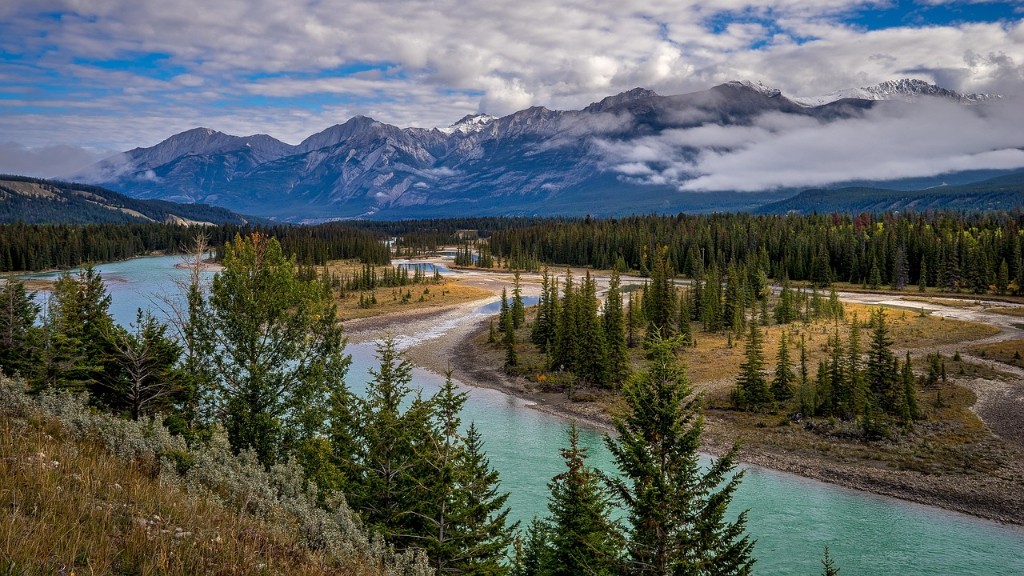Located in the northeast part of Africa, the River Nile was one of the most important waterways of ancient Egypt. This river was extremely vital to the success and prosperity of the ancient Egyptian civilization. The Nile River was the lifeblood of Ancient Egypt, providing the country with a steady supply of food, water and transportation. Without it, Egypt couldn’t thrive and it’s people could not survive. The Nile was so significant to daily life in ancient Egypt that it was worshiped like a god.
The Nile River provided Ancient Egypt with the most important crop of all – water. The soil in Egypt is rich in nutrients but very high in mineral salts due to the high evaporation rate from the desert conditions. This caused the soil to become dry and to become hard like brick. The only way for the people of Ancient Egypt to get reliable access to fresh water was from the Nile River during the annual flooding season. Ancient Egyptians would flood their land to make the soil fertile and the extra water would be stored in the canals upriver. This irrigation system made it possible for crops to flourish in the harsh desert environment.
The Nile River also acted as a major trade route, connecting different parts of Ancient Egypt. By traveling up and down the Nile on ships, traders were able to find new markets, new sources of raw material, and new ideas to bring back home. This encouraged commerce, cultural exchange, and growth for the country.
In Ancient Egypt, the Nile River was also a major source of food. Fish, such as Nile perch, were important part of the diet and many Egyptians gained their livelihoods as fishermen. The river also provided Ancient Egyptians with other foods, such as green onions, papyrus, lentil, cress and lotus.
The Nile River was extremely important to Ancient Egypt, not only as the source of life and sustenance but also as a source of power. The annual flooding of the river provided a natural energy source that was used to power water mills and pumps. This enabled early Egyptians to start their advances in civil engineering, technology and construction.
Religion & Mythology
The Nile River was also significant to religion and mythology in Ancient Egypt. According to Egyptian mythology, the Nile was created by the god Hapy who was responsible for the annual flooding of the river and the consequent fertility of the land. Hapy was seen as a benevolent figure and was worshiped for his power to provide life and sustenance to the Egyptians.
The Nile River was also highly significant in the development of the Egyptian gods and goddesses. According to Egyptian mythology, the god Osiris was killed by his brother Seth and his body was cut into pieces and flung into the Nile River. The story of his resurrection was then used to illustrate the hope of eternal life, teaching to the ancient Egyptians that life on earth was just a part of a larger cycle of rebirth and afterlife.
The Nile was also a powerful symbol of funerary custom and tradition. Ancient Egyptians used the running of the river to help navigate their way to the afterlife and it was believed that the river was the road to eternal life.
Social Significance
The Nile River was important to society in Ancient Egypt. Its banks were an important part of daily life, where many people gathered to do business, enjoy leisure activities, and exchange ideas and gossip. It was also a place of social hierarchy and status – people who lived on the banks of the Nile had higher social standing than those who lived further away from the river.
The Nile River was also seen as a source of strength, courage and stability in Ancient Egypt. Ancient Egyptians had a feeling of inseparability from the river. They believed that the strength of their civilization was intertwined with the strength of the river and that without it, their civilization would not have been able to survive.
Political Significance
The Nile River was an important factor in the political makeup of Ancient Egypt. Major cities, such as Memphis, Thebes and Heliopolis, developed on the banks of the river, and their rulers used the river to make their cities prosper. These major cities became economic and cultural centers of Ancient Egypt, and formed the building blocks of what would become the once-powerful Egyptian Empire.
The most powerful ruler of Ancient Egypt was the Pharaoh. The Pharaoh was the political and religious leader who held the most power in Ancient Egypt. The Pharaohs were regarded highly by the Egyptian people and were seen as living gods who were able to control the river’s flooding level by consulting the gods. It was believed that Pharaohs could raise or lower the water level of the Nile to suit their needs – for example by providing water for crops or increasing the navigability of the river.
Architecture
The Nile River also played a significant role in the architectural development of Ancient Egypt. Many of the most important monuments in Ancient Egypt were built along the banks of the Nile, and the Ancient Egyptians used the river to transport building materials and heavy stones necessary for the construction of major buildings and monuments. The most famous monuments in Ancient Egypt all have a connection to the river, with the most famous of all – the Pyramids of Giza – having been built almost completely of stones quarried from the riverbanks.
The Pyramids of Giza were not the only monumental structures built along the banks of the Nile. The temples of Luxor and Karnak, the Great Sphinx and the Colossi of Memnon are other famous examples of monumental structures built along the banks of the river. These structures demonstrate Ancient Egypt’s strong connection to the river, as well as its importance as an engineering feat thousands of years before modern technology and materials.
Warfare
The Nile River played an important role in warfare and military strategy in Ancient Egypt. To the Egyptians, the river was seen as a defence against invaders. The river and its banks were used as a natural fortification, with large and powerful cities being built along its banks. The riverbanks were also used to build and defend boats and ships, allowing the Egyptians to use the river as an effective way to transport troops.
The Nile River was also vital for military strategy. By using the Nile’s water to transport troops, Egypt was able to effectively launch surprise attacks and retreats and to outflank the enemy. This allowed Egypt to easily attack other parts of their empire, as well as to protect itself from external threats in a way that land-based armies could not.
Impact on Wildlife
Finally, the Nile River had a significant impact on the wildlife in Ancient Egypt. The river was home to many different species of fish, mammals, reptiles and birds. Archaeological remains, such as fossils, have revealed that some of these species, such as the Nile Monitor lizard, crocodiles, hippos, and otters, were hunted and used by the Ancient Egyptians for their commercial and spiritual needs. The presence of these species also demonstrate the importance of the Nile River in providing a lifeline for these animals, allowing them to thrive in a harsh desert environment.
The Nile River was an invaluable resource to the Ancient Egyptians, providing a source of life, sustenance, transportation, power, and protection. Without it, Ancient Egypt would not have been able to develop into one of the most powerful and advanced civilizations of the ancient world.




